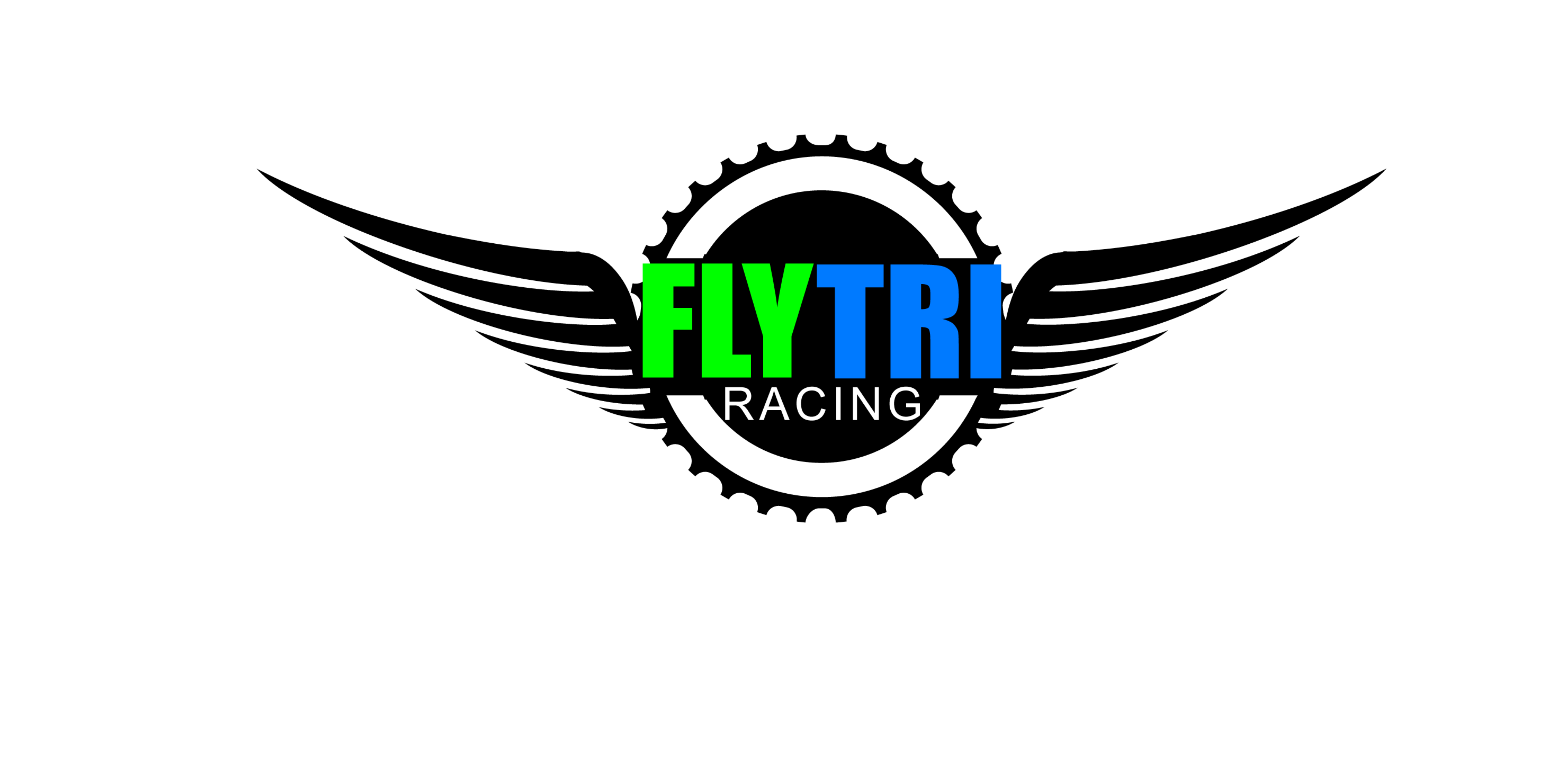So, you want to be a successful triathlete? Well, of course, you do! That’s why you’re reading this article right now. Perhaps you’re aiming to qualify for the World Championships 70.3 or Kona. The off-season is the perfect time to learn and build new habits to help you reach new levels for the next season that will soon be upon us.
Here are the 5 essential key principles that will help you unlock your potential and become a successful triathlete. Perhaps you will find personal performance breakthroughs you never thought possible. The 5 key principles are:
- Consistency is the Key
- Training Right
- Dialing in Your Fueling Plan
- Getting Mentally Tough During Training
- Staying Injury-Free
Consistency is Key
As basic and nonsexy as it sounds, consistency is most effective over very long periods of time. It’s not the glamorous, Instagram-worthy moments; what happens in-between matters most. Consistency is simple, but not easy. It’s hard to get up and train daily while you juggle your daily life. But, consistency is essential to great success, as with so many things we do in life.
To be consistent, you have to become organized in your daily routines. To be consistent, you have to minimize frequent disruptions that often come from work and daily life. Use a planner so you can be aware of and prepare for what you have coming up. Try to operate your life as simply and efficiently as possible. Avoid distractions, such as scrolling through social media posts on your phone, as these time-wasting activities can suck your time before you know it. Live purposefully.
Weather can play a role in your ability to be consistent. Having a backup plan and knowing what you’re going to do when bad weather comes, such as opting for a treadmill or using stretch cords to replace pool time, and of course, having a basic trainer, which most triathletes have now, make it much more likely you will stick with your training regimen.
Train Right
Another essential principle to master is how to train right. You already know how important preparation.It typically takes 16-22 weeks to prepare for a major endurance event, like an Ironman. However, before you even start this demanding 16-22 week journey you’re going to need a significant foundation of basic fitness on which to build.
It’s important to have a plan with an ebb and flow of flexibility built in so you can adapt to the demands of your life outside of sports. Consider getting a coach to collaborate with and have open communication about what is going on in your life. Family and work plans (and any associated stress) all contribute to how frequently and intensely you can train. Having another set of eyes from a coach to help troubleshoot your training progress can prove invaluable. Even coaches who are competing athletes have coaches for a second set of eyes to add to their perspective. It’s a proven fact that when you have that second set of eyes to establish accountability you will do better than you would without help.
You should be mindful of how much training and work your body can manage. Not everyone can handle 20-hour training weeks, and it’s also unlikely you will get a sub-10-hour performance in an Ironman on only 6 hours a week. If you have a high-stress job and a family to take care of, then a demanding training commitment is going to be near impossible to maintain without risking divorce. You need to be realistic with yourself and the dynamics of your life. Can you find the time and energy to train for an Ironman with family support to do it right, especially on those days when you have long training rides?
Many triathletes emphasize the long, slow runs too much. They do really low-volume days during the week and then crank out 20-30%+ of their weekly mileage on the weekends. This considerable jump in volume puts you at a real risk of injury because the soft tissue around your joints is simply not ready. On the other hand, many triathletes will hammer too many rides and runs at a moderate intensity of Zone 3 or 4 for rides and runs that are meant to be easy. Too much high intensity also puts you at risk for an early plateau, over-training, injury, and burnout.
For those 20 weeks leading up to your Ironman event, look to include at least 5 over-distance bikes and runs. And be sure to plan and coordinate with your family and coach.
The next part of your training includes restoration of at least 7.5 hours of sleep a night. You’ll need to fuel your training by aiming to eat small meals and/or healthy snacks every 2-3 hours. Remember that it’s what you do outside of training that allows you to become faster. Recovery between your main sessions is very important. Just because you’re done training for the swim, the bike, and the run, doesn’t mean you’re done training. Recovery outside of training is also a very important part of training.
Have a Race Fueling Plan
A very important component of being a successful triathlete is having a fueling plan, especially for triathlons that may take you 2 hours or more, especially for the 70.3 or Ironman distance. Many athletes go under-prepared here and do not properly practice their nutrition plan. Then they end up stressing at the last minute about what they should do when it’s too late
The first thing to understand is your sweat rate in a variety of conditions. Feel free to go back to our TrainingPeaks article to review and assess your sodium rate per hour, which will be a very important element to incorporate into your nutrition plan. Some athletes may need as much as 1500mg of sodium per hour while others could be fine with less than 500mg of sodium per hour. You need to know this.
Next, you need carbohydrates. In this low carbohydrate and fat-adapted diet craze, I know we can still debate all day when, where, and how to use carbohydrates. However, carbohydrates still provide the fastest supply of energy. This can be anywhere from 30-60g of carbohydrates/hour up to 90g/hour for some athletes. The amount will be a little lower on the run segment. However, some of the top marathoners have consumed around 90g of carbohydrates an hour to be able to sustain those wicked fast paces. Also, if you are out there for a relatively long time, for satiety, you may consider 1-2 grams of protein per hour on the bike.
Lastly, you have to practice your fueling plan. I recommend starting to test your sweat rate at least 16-20 weeks out or as soon as you begin specific training. Then get your fueling plan dialed in on your longer specific sessions. As your race gets closer, start practicing your fueling plan once or twice during the week as your training sessions become even more specific.
Become Mentally Tough
The racing is the easy part. The training, on the other hand, is the difficult part. For most of us, we are integrating our sport into our lives, which will make staying committed to our goals much more challenging as our life demands increase or change. A question you need to ask yourself is, do you have what it takes to stay committed? I know you probably have a full-time job or school, family relationships to keep, and perhaps a social life you would like to maintain. Not to mention all the little things that come up that need to be taken care of. So, you will need to work on integrating triathlon training into your life with your goals.
Every one of us only has a finite amount of willpower each day. If you use all of your willpower up before your training sessions, then you will struggle in training. What you do outside of training will certainly impact your training. To minimize the amount of willpower you use, it’s important for you to develop ways to become more time-efficient, avoid distractions, and organize your time to minimize decision-making and stress. Aim to keep your decisions throughout the day simple. The best athletes and CEOs of successful organizations practice simplicity. Consider doing your main training session for the day in the morning before you become too fatigued by what the day throws at you.
As the weeks and days get closer to your race (the taper phase) your stress and anxiety will likely increase because you know the pain, suffering, and uncertainty you’re about to endure. This is why it’s important to learn how (through training & life) to only focus on what you can control and adapt to any situation that is thrown your way. This is another part of being mentally tough. For your endurance race, focus on what you can control. You should focus on your race plan, such as target watts, heart rate, or pace until the last 10% of the race until you can truly run well above your race plan. This is why having a pacing plan is so important, whether it’s based on pace, heart rate, or power, or a combination. Part of being mentally tough is sticking to your pacing strategy and not getting sucked into someone else’s race strategy. You can’t control the environmental conditions for the given day or what someone else does, so don’t waste energy trying. Practicing visualization of the things you can control will help you be better prepared for the unknowns. You will also feel more relaxed and better able to stay positive, which will also preserve the carbs your brain needs to to stay tough and not waste them on things outside your control.
The last part of being mentally tough is staying focused and positive during your race. If you are consistent and train properly, and you’ve practiced and executed your fueling plan, then you are well on your way to having the positivity and mental toughness that will serve you well in your race.
Stay Healthy
Consistency is the foremost fundamental behind any successful training regimen, and you can’t be consistent if you’re injured or sick. If you feel ill, especially anything below the neck or feel a niggle coming on, follow the 2-day rule. Take two days off from that particular sport or injured area. If you fail to do so, those days could turn into 2 weeks, or even 2 months. A simple guideline: “When in doubt, leave it out.” When you are first feeling these niggles or have symptoms below the neck, seek early treatment to stop and find the possible root cause of injury or illness.
Beware of any foot pain that you feel, especially when running or walking. From both personal and others’ experience , it’s wise not to train through any foot pain. Follow the 2-day rule immediately and seek professional help starting with a doctor you trust. Remember, the season is long, and if you have been consistent, then two days off isn’t going to hurt you.
To prevent injury, include massage, chiropractic visits, and restoration in your training. Schedule your massages and chiropractic visits once or twice a month. If you can, it would be great to get massages weekly. Include plenty of restoration in your training. There are plenty of extra gadgets out there that may help accelerate recovery. However, you should prioritize quality sleep, nutrition, and plenty of easy recovery days in between your training. If you’re staying up an extra 30 minutes late at night putting on your recovery boots, it’s probably not the best use of your recovery time.
Conclusion
Incorporating these five keys discussed above: training right, improving your mental toughness, dialing in your fueling plan, staying healthy, and being consistent can significantly improve your triathlon performance. It takes a focused approach every day during and after training sessions. Success in your triathlon training is not necessarily about what you do in training but what you do outside of training. You need to have a broad perspective of how training fits into your life.
William Ritter, from Tyler Texas, enjoys working with athletes that are looking to improve their performance in triathlon or running. He specializes in coaching triathletes and runners of all abilities. Ritter’s coaching is extensive and focused on the individual athlete, blending the art and science of coaching. Ritter is the Head Coach at Fly Tri Racing with over 13 years of coaching experience and 27 years of competitive experience. Coach Ritter is a USA Triathlon Level II Short & Long Course Coach, USA Triathlon Level 1 Youth & Junior Coach, USA Track & Field Level II Endurance & Youth Coach, and USATF Cross Country Specialist. Including a TrainingPeaks Level 2 and Power Certified Coach, Ironman U, Tri Sutto Coaching Certified, USA Triathlon, and Cycling Coach. To learn more about Ritter and personal coaching visit www.flytriracing.com or send an email to william@flytriracing.com.




